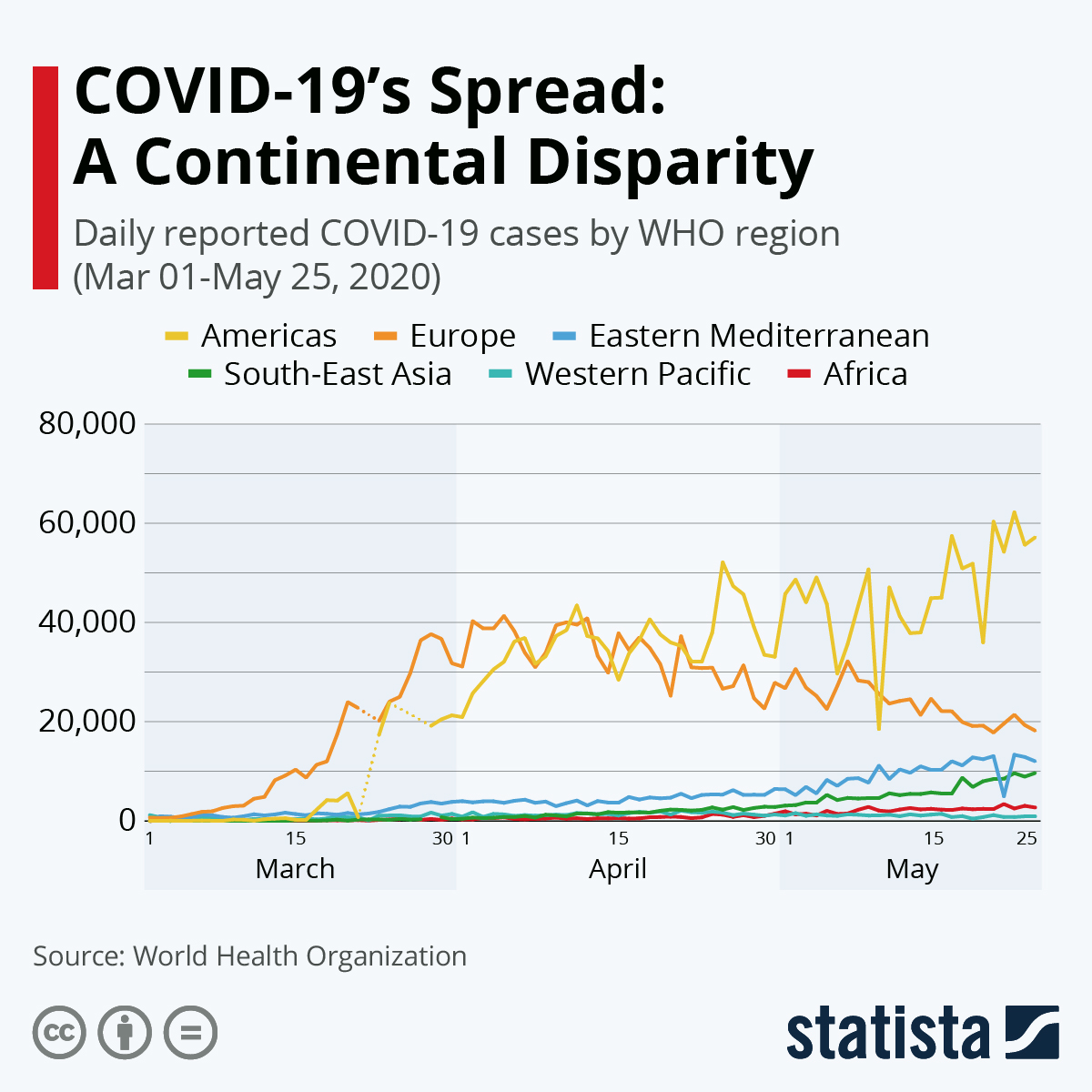
As of May 27, Africa had 119,000 confirmed cases of coronavirus according to the World Health Organization, just 5,000 more than the U.S. state of Illinois. Indeed, the continent appears to be on a completely different trajectory to the WHO’s Americas and Europe regions who have recorded 2.45 and 2.04 million COVID-19 cases respectively. Even though most experts are attributing the slower spread of the virus in Africa to the continent’s woeful testing capacity, there might be more to the story amid a sense of hope that it could be spared the worst of the pandemic.
In terms of testing, the U.S. ratcheted up its daily tests to 42.79 per 1,000 of is inhabitants as of May 24 while Canada managed 39.21 per 1,000 of its citizens as of May 25. Africa is far behind and Nigeria, its most populous country, carried out 0.22 tests per 1,000 inhabitants as of May 25, according to Our World In Data. Its government has stated that they are focusing on clusters of outbreaks rather than widespread testing of the population. In Ethiopia, the testing rate is 0.73 per 1,000 people while it’s noticeably higher in South Africa at 9.84 per 1,000 inhabitants.
That low rate of testing has raised fears that COVID-19 is spreading across Africa undetected but that may not be the case. Last week, Dr. John Nkengasong, director of the Africa Centres for Disease Control and Prevention, said that the continent has not experienced a spike in unexplained community deaths nor massive flooding of hospitals. He nevertheless urged governments to remain cautious, warning that African countries need to drastically increase their testing capacity and aim to test at least 1 percent of the continent’s population.
Health systems across Africa remain highly vulnerable to outbreaks of disease due to years of conflict and turmoil with medical equipment in short supply. Grim models have suggested that three million people could be infected in a worst case scenario with 300,000 deaths. As of May 27, Africa’s death toll stood at just over 3,500. Experts have been baffled by that low number with some attributing it to factors such as Africa’s youthful population, warm weather and the prevalence of BCG vaccinations against tuberculosis. Droplet-spread diseases such as the flu have historically spread at a slower pace in Africa and COVID-19 may be similar. Even though the trend is positive thus far, officials are advising African government’s to remain extremely vigilant until scientific evidence emerges to explain it.

Description
This chart shows daily reported COVID-19 cases by WHO region (Mar 01-May 25, 2020).
by Niall McCarthy, Statista
Related posts
Category: Uncategorized
Malnutrition is a health crisis affecting millions around the world — and one becoming more urgent as the pandemic continues. Its impact is not just represented in [...]
Magazine Training International’s mission is to encourage, strengthen, and provide training and resources to Christian magazine publishers as they seek to build the church and reach their societies for Christ.

